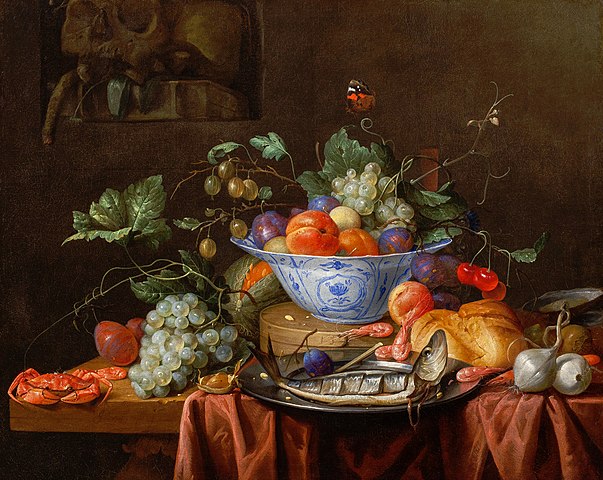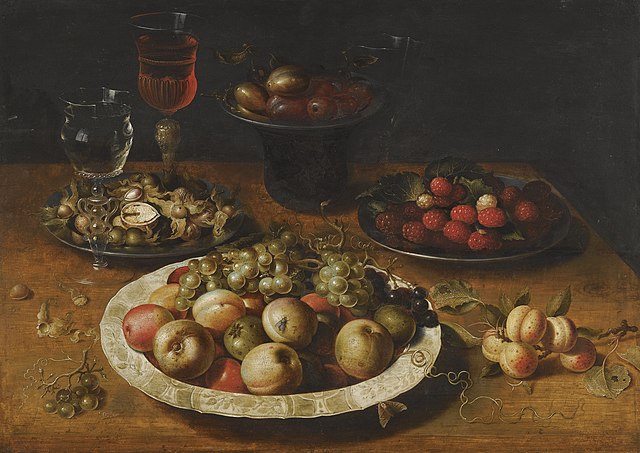
Thammasat University students who are interested in philosophy, aesthetics, art, literature, history, sociology, political science, economics, and related subjects may find a newly available book useful.
The Aesthetics of Taste: Eating within the Realm of Art is an Open Access book, available for free download at this link:
https://brill.com/display/title/62914?rskey=yJnTPi&result=2
The TU Library collection includes several books about different aspects of the aesthetics of food.
As the publisher’s website explains,
When does eating become art? The Aesthetics of Taste answers this question by exploring the position of taste in contemporary culture and the manner in which taste meanders its way into the realm of art. The argument identifies aesthetic values not only in artistic practices, where they are naturally expected, but also in the spaces of everydayness that seem far removed from the domain of fine arts. As such, it seeks to grasp what artists – who offer aesthetic as well as culinary experiences – actually try to communicate, while also pondering whether a cook can be an artist.

The book’s introduction notes,
The French existentialist philosopher Jean-Paul Sartre harbored a particular dislike for shellfish, especially for their white bodies that resist being pulled out of their shells and cuirasses. He found prawns, mollusks, oysters, and lobsters thoroughly disgusting, and likened them to insects devoid of consciousness. When Simone de Beauvoir quizzed him about the details of this aversion, Sartre replied: “When I eat a crustacean, I am eating something that belongs to another world.” Erik Satie made the color white a key criterion in his dietary regime. Known for his utter eccentricity, the French composer set out exactly three minutes for lunch (always from 12.11 to 12.14) in his meticulously planned daily schedule, in which dinner, invariably starting at 19.16, took four minutes. Satie never talked during this time for fear of choking to death. His idiosyncrasies governed a range of practicalities in his life. His wardrobe was full of identical brown corduroy suits, which he would wear with a white vest and white tights. His menu selection was equally restrictive and precise. He wrote down in his notes: “I eat only white victuals: eggs, sugar, grated bones; the fat of dead animals; veal, salt, coconuts, chicken cooked in white water, fruit mould; rice, turnips; camphorised sausage, pasta, cheese (cream), cotton salad and certain kinds of fish (without skin). I have my wine boiled, and drink it cold with fuchsia juice.”5 Even if this statement was a component of Satie’s self-fashioning rather than a factual account of his preferences, it is certainly interesting for the choice of the aesthetic axis around which the account of his bill of fare revolved. Cooking is distinctive to humans. The transformation of the raw into the cooked produced social bonds and culture. The sensation of hunger and the imperative to appease it bind us to other animals, but the manner in which this natural need is met emphatically liberates humans from a dependence on nature. Food Is Culture, as Massimo Montanari, an eminent food historian, proclaims in the title of his book. Montanari goes on to insist that “even nature is culture.” Cooking is the most human of activities. By cooking, we detach ourselves from the natural world and harness nature: “The chemical modifications induced by cooking, and the combination of ingredients, work together to bring to the mouth a food, that, if not completely ‘artificial,’ is surely ‘created.’” In this insight, Montanari points to a bridge between food and art, prompting the realization that the seeds of art germinate in the fundamental nutritional processes. Sartre’s and Satie’s food preferences, in which color serves as the primary criterion of choice, are contrasting and paradoxically similar, speaking to the double entanglement of food in the cultural aspects of human existence. Firstly, food is associated with free choice; secondly, the whimsical pronouncements of connoisseurs bear out the fact that our decisions do not always result from focusing on nutritional values. People’s menus are determined by culture and arranged in conformity with ethical, economic, identarian, and aesthetic norms. While the aesthetic component of food as a rule receives only limited attention, it is becoming increasingly central to contemporary interpretations of broadly conceived culinary practices. That aesthetics, art, and cuisine are becoming aligned is powerfully borne out by our daily consumer choices (e.g., we only buy nice-looking, shapely vegetables, and we are ready to pay a lot in restaurants which put a premium on food presentation) and by the inclusion of foodstuffs and cooking techniques in artistic practices… Food is complex enough to require the mobilization of a variety of disciplines and discourses; hence, my theoretical argument on taste is underpinned by philosophy, culturology, art sciences, history, sociology, and the anthropology of taste, while also drawing on the articulations of artists. Consequently, this book embraces the interdisciplinarity characteristic of food studies. The chapter devoted to “The Antinomies of Taste” offers an account of the positions adopted by two great thinkers of the age of taste: Immanuel Kant and David Hume. Their ideas are juxtaposed with the views of Anthelme BrillatSavarin, who can suitably be called a gastrosopher. In this chapter, I depict the dramatic tension between appetite and aesthetics, which was constitutive of and intrinsic to 18th-century debates on the essence of taste. I dwell on these concepts not only by way of historical introduction; in fact, the notions and assessments formulated back then have ever since formatively affected and organized the prevalent modes of thinking about the relationship between the sense of taste and the realm of its activity (i.e., eating and drinking) in the context of art. If asked whether food was art, Kant, Hume, and Henry Home would answer in unison that it was not. The intellectual tradition of the West has quite eagerly included taste in philosophical discourses, but only as a metaphor for aesthetic sensitivity. Nevertheless, despite a clear dividing line between corporeal and intellectual pleasures, even Kant’s restrictive philosophy carries the potential to abate the dissonance between aesthetic and gastronomical taste. The two are linked, as Rodolphe Gasché observes, by the subjectivity, immediacy, and sociality of experience. Though essential to life and culture, food and eating have never really been esteemed by Western philosophers. While food and eating have been brought to bear in philosophical discussions, they have more often than not featured as emphatic examples to illustrate a position on another matter.

(All images courtesy of Wikimedia Commons)
